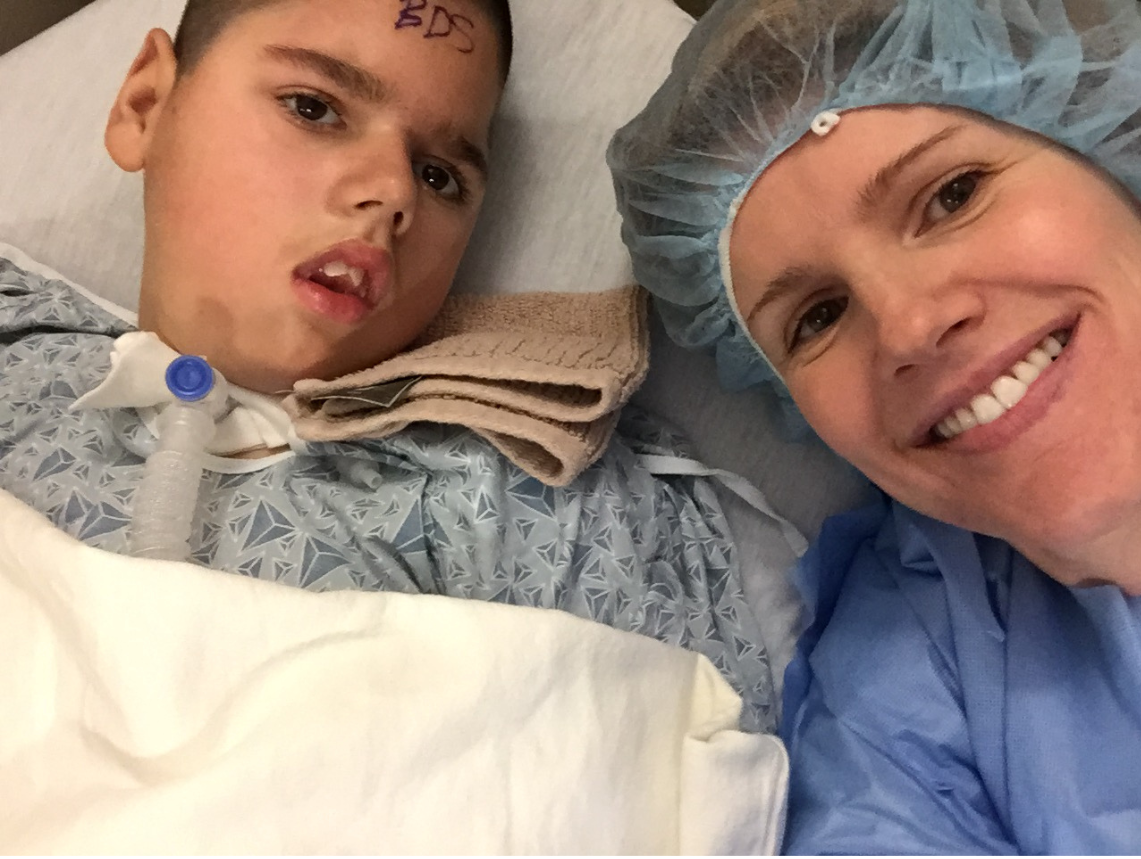Spinal Fusion
Over time you may see your child experience increased discomfort in standing or sitting, and this can be very upsetting. Many children with complex medical conditions develop a curvature of the spine, or scoliosis, because the muscles that support their spine are impaired. Spinal misalignment can cause back pain and impact the position of the body. More severe scoliosis restricts the available space for internal organs. As a result, scoliosis may diminish your child’s lung capacity, making them more susceptible to infections and even lung collapse.
Finding ways to address scoliosis is important, and the medical team may ultimately suggest surgery. The surgeon and other clinicians can help you understand their reasons and explore other available options, so that you can decide what is best for your child.

Your Team:
An interdisciplinary specialist who helps manage the medical, social and emotional challenges of complex and/or long-term care.
A specialist who focuses on injuries and diseases affecting your musculoskeletal system (bones, muscles, joints and soft tissues).
A specialist whose aim is to improve the quality of life of their patients over the course of their illness regardless of stage, by relieving pain and other symptoms of that illness.
A complex care clinician and orthopedic surgeon can assess your child’s overall health and help you understand the options being considered. A palliative care clinician can help you identify difficult questions and provide support when considering complex decisions.
If a palliative care team is available, they can work with the orthopedist and others to help you have a sense of the big picture of your child’s health, and make you feel more settled in your decisions about the decision you make. The CPN guide “Evaluating Spinal Fusion for Your Child with Neuromuscular Scoliosis,” developed by the Boston Children’s Hospital Complex Care Clinic with contribution from CPN, offers a detailed explanation of the surgery and the decision-making process.
“We wanted to get all the doctors in the room to say, “Okay, if we fuse his spine, what’s the impact on his GI tract and all the things that are making up [our child]” … When you sit down and put a face on it, and you have full-on conversation, it’s much different than sitting with the chart.“
– Jennifer, parent of Ben
Related Resources
-
 Saying no to spinal surgery: I couldn't imagine her going through a major surgery like thatvideo
Saying no to spinal surgery: I couldn't imagine her going through a major surgery like thatvideo -
 Scoliosis and Spine / Spinal Surgery: Facts and Decision-Makingguide
Scoliosis and Spine / Spinal Surgery: Facts and Decision-Makingguide -
 Spinal Fusion Surgery in Children: A mom reflects several years post surgeryvideo
Spinal Fusion Surgery in Children: A mom reflects several years post surgeryvideo -
 Spinal Fusion Surgery: Understanding everyone's expectationsvideo
Spinal Fusion Surgery: Understanding everyone's expectationsvideo -
 Spinal Fusion: Two Children, Two Moms, Two Different Decisionsvideo
Spinal Fusion: Two Children, Two Moms, Two Different Decisionsvideo -
 Spinal Fusion Surgery: Creating a space to consider the decisionvideo
Spinal Fusion Surgery: Creating a space to consider the decisionvideo